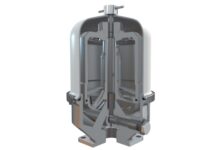
Australia is forging a path towards a truly equitable and robust workforce, and at the heart of this evolution lies inclusive employment. For Australian employers looking to thrive in 2025 and beyond, understanding and actively embracing inclusion is no longer just a ‘nice-to-have’ thought – it’s a strategic necessity.
The landscape is shifting, particularly with the introduction of the new Inclusive Employment Australia program, signalling a profound commitment to harnessing the full potential of all Australians.
Think of your workplace as a vibrant tapestry. The more diverse the threads – in terms of background, ability, experience, and perspective – the richer, stronger, and more beautiful the final creation. Inclusive employment is about weaving every thread into that tapestry, ensuring no one is left on the sidelines.
What is inclusive employment in Australia?

This new government initiative will incorporate person-centred, flexible, and comprehensive replacements of the existing Disability Employment Services (DES) program, starting 1 November 2025.
It will further assist individuals with disabilities, injuries, or health conditions in preparing for, locating, and maintaining employment and, most significantly, in developing their careers. As an employer, this translates into a new system that will help you reach a larger pool of talent and provide more support in integrating and retaining diverse workers.
The program will also offer tailored support services, enhanced funding models, and stronger partnerships between employers and service providers to improve long-term employment outcomes.
The following information will help Australian firms navigate and reap the benefits of inclusive employment in 2025:
1. The Changing Environment: An Overview of Inclusive Employment in Australia

One significant change is the shift to Inclusive Employment Australia. Employers need to know about:
- A Wider Talent Pool: The new initiative aims to provide access to more individuals, including voluntary participants who are not receiving Centrelink benefits or those with a very low assessed work capacity. This implies that you will be able to choose from an even greater variety of applicants.
- Enhanced Employer Support: The program promises a greater emphasis on providing direct employer support. This includes:
- Help identify your business needs.
- Assistance in finding suitable candidates.
- Guidance on making workplace adjustments, job customisation, and tailoring roles.
- Support for creating safe and productive workplaces.
- Assistance in retaining employees with disabilities.
- Potential Wage Subsidies: Employers may continue to be eligible for wage subsidies (up to $10,000 for eligible job seekers) to help with the costs associated with hiring and supporting employees from the program.
- A New Network of Providers: A diverse network of high-quality providers will deliver the new program, focusing on fostering strong relationships with both job seekers and employers. They will be your primary point of contact for tapping into this talent pool.
2. Legal Obligations and Ethical Imperatives

Beyond the new program, essential felony and moral concepts are preserved to underpin inclusive employment in Australia.
- The Disability Discrimination Act 1992 (DDA) remains the cornerstone. It makes it unlawful to discriminate against a person because of their disability in employment. This includes all ranges from recruitment to dismissal. The Act ensures equal access to job opportunities, training, promotions, and workplace adjustments for individuals with disabilities. Employers are required to make reasonable accommodations, such as modifying workspaces or providing assistive technology, so that employees with disabilities can perform their roles effectively. The DDA also covers harassment and ensures that people with disabilities are treated with dignity and respect in the workplace, promoting a more inclusive and fair working environment.
- Reasonable Adjustments: Employers have a legal obligation under the DDA to make “reasonable modifications” to accommodate a worker with a disability, enabling them to manage the genuine and reasonable requirements of the job. This ought to contain bodily modifications, flexible painting arrangements, assistive technology, or modifications to work tactics. The onus is on the agency to illustrate an “unjustifiable problem” if an adjustment cannot be made.
- Fair Work Act 2009: This also performs a function, particularly concerning flexible working arrangements.
- Ethical Responsibility: Beyond criminal compliance, there may be a developing ethical imperative to create offices that reflect the diversity of Australian society and provide equitable opportunities for all. This complements your reputation and aligns with network values.
Practical Steps for Employers in 2025

To truly embed inclusive employment within your organisation, consider these practical steps:
- Leadership Commitment: Inclusion must start from the top. Leaders need to champion the vision, allocate resources, and hold themselves and others accountable.
- Review Recruitment Processes: Write inclusive job descriptions that focus on essential skills and outcomes, avoiding jargon and unnecessary requirements.
- Advertise on diverse platforms, including those connected with Inclusive Employment Australia providers.
- Train hiring managers on unconscious bias and implement accessible interview formats (e.g., skill-based tasks that allow for support persons).
- Create an Accessible Workplace: This encompasses both physical accessibility (such as ramps and accessible restrooms) and digital accessibility (including accessible software, websites, and communication tools).
- Foster an Inclusive Culture: Provide regular diversity and inclusion training for all staff members.
- Encourage open dialogue and create safe spaces for employees to share their experiences.
- Promote inclusive language and behaviours.
- Embrace Flexibility: Offer flexible working arrangements (hours, location) as a standard practice, not just an exception. This benefits a wide range of employees, including those with disabilities or caring responsibilities.
- Understand and Implement Reasonable Adjustments: Establish a clear and well-communicated process for discussing and implementing adjustments. Proactively ask candidates and employees what support they might need.
- Leverage Support Services: Actively engage with the new Inclusive Employment Australia providers and other organisations, such as JobAccess or the Australian Disability Network. They are invaluable partners in finding talent, accessing funding for adjustments, and providing ongoing support.
Final Thoughts
The year 2025 will mark a significant turning point in Australia’s inclusive employment landscape. Not only can employers meet the expectations of the community by understanding the new Inclusive Employment Australia program and fulfilling legal requirements, but they can also gain enormous competitive advantages and create genuinely resilient, innovative and successful workplaces of the future.








